By Shalene Hughes
The word “Mustelidae” is derived from the Latin word Mustela which means weasel.1 The Mustelidae are a diverse group of carnivorous mammals which includes badgers, minks, otters, wolverines, and – you guessed it – weasels! These mammals usually share the following characteristics: short legs, small skulls, rounded ears, thick fur, and elongated bodies.1
Short-Tailed Weasel
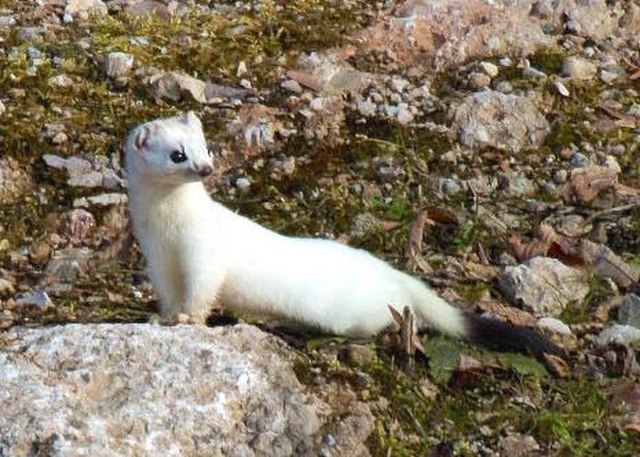
In Alberta, the most common weasel is the Short-tailed weasel. They are approximately 1 ft in length and weigh approximately 170 g.6 Despite their size, they are some of the most carnivorous animals in Alberta, consuming other small mammals, invertebrates, and sometimes amphibians.2 Weasels tend to live in thick Albertan vegetation and are most active during the night.2 Short-tailed weasels have adapted to the change of the season by changing their colour to blend into their surroundings. During the summer, the weasel is brown with a white belly and during the winter they are mostly white (except for the black tip on their tail) in order to blend into the snow.2
American Badgers
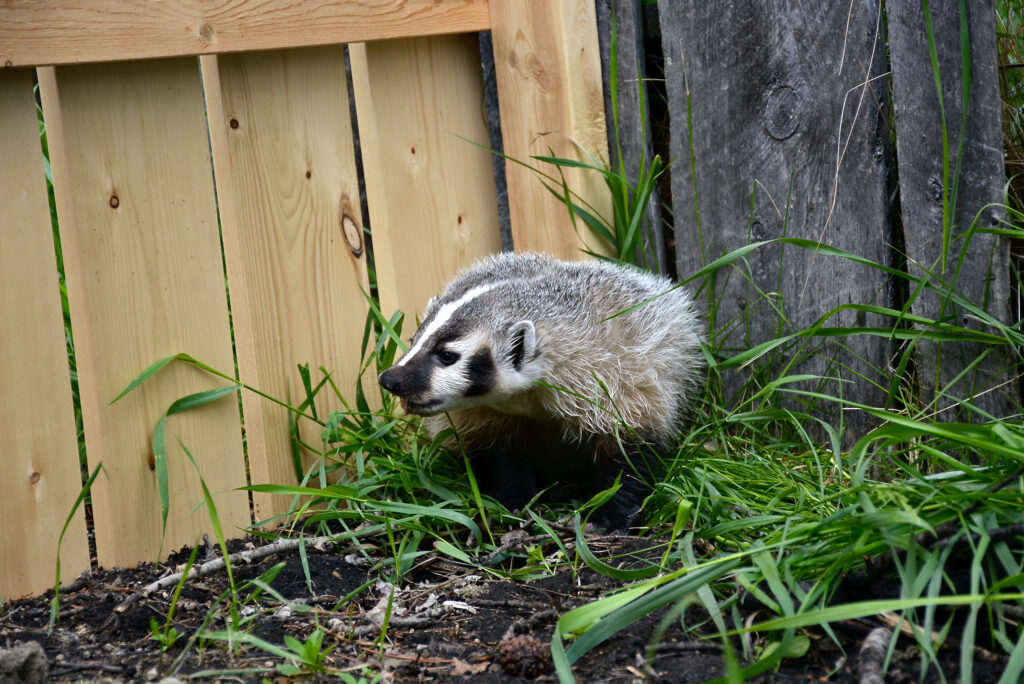
Despite their title, American badgers are also found in parts of Canada, including Alberta. These mammals are 50-80 cm in length and can weigh 13-17 lbs.3 The diet of the American badger consists of small rodents, birds, eggs, reptiles, and large invertebrates3. Grasslands are where these animals use their strong claws to dig elaborate tunnel networks and chambers3. American badgers are grey or brown in colour with white stripes from their face to the middle of their back. Another distinctive feature of an American badger is their fluffy ears which look like earmuffs.
Minks
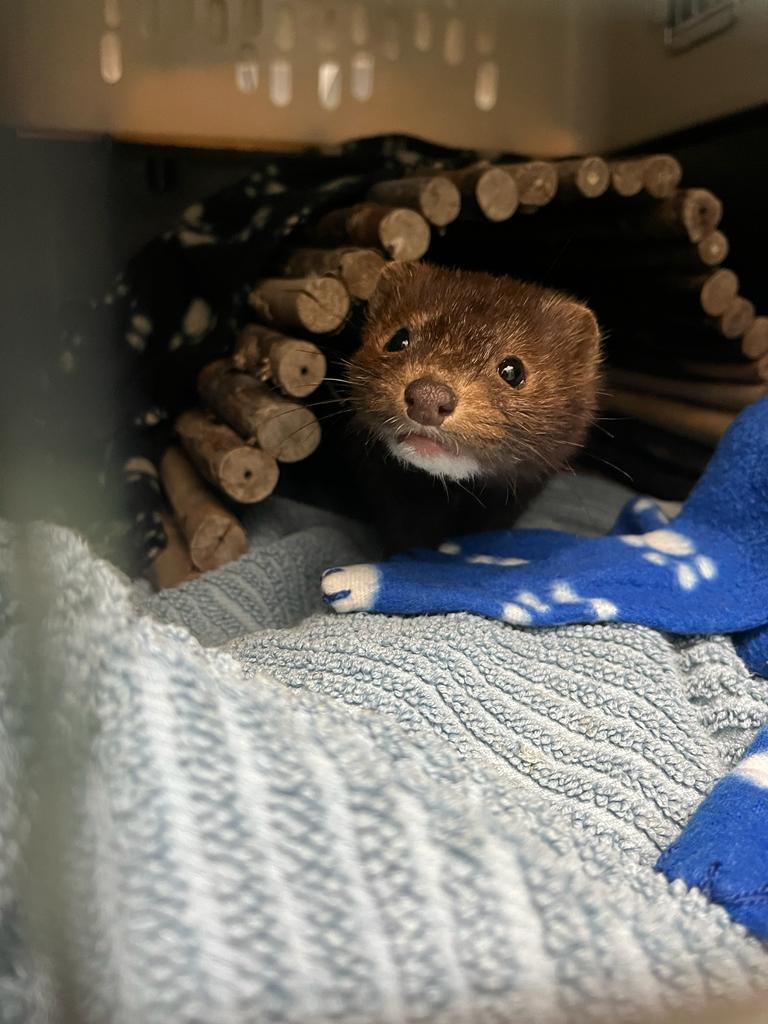
Minks are usually found in Alberta’s wetlands, although they may stray up to 200 m from the water’s edge in search of food.4 A mink’s diet contains mainly of muskrats, but they also consume ducks, amphibians, small mammals, fish, and more4 . Minks take up residence in burrows abandoned by muskrats.4 When hunting fish, the mink will locate prey from above and plunge into the water as their bodies are not well-equipped for deep diving. Minks have small, slightly webbed feet and fluffy tails.4
River Otter
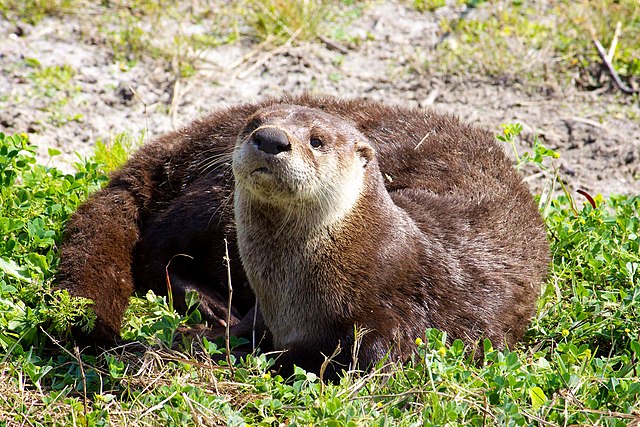
River otters are designed for water dwelling with their flattened tail, webbed feet, thick, insulating pelt, and ability to remain underwater for up to four minutes!4 River otters typically eat slow-moving fish species like suckers, minnows, and catfish.4 When hunting in conditions where they cannot rely on their eyesight, such as in murky water, river otters rely on their whiskers, which can detect pressure waves that are caused by fish swimming by.4
Wolverines
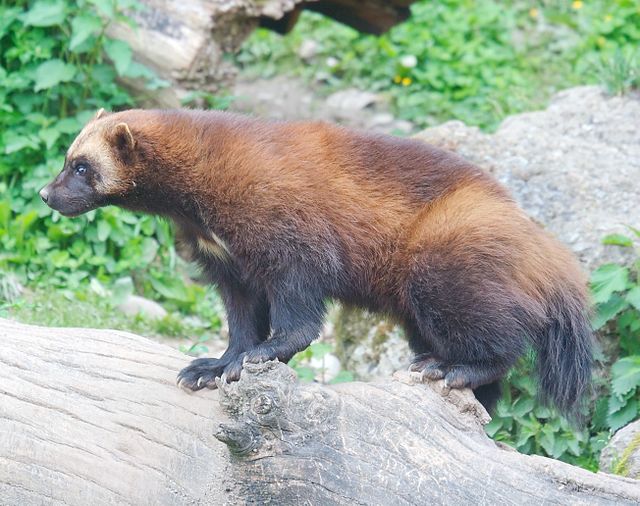
Wolverines are the largest terrestrial Mustelidae.5 They are characterized by two stripes along their backs, a thick tail, and a short and stocky frame. Wolverines can range from 16-40 lbs.5 The wolverine hunts hares and rodents and scavenges large animals such as moose and caribou.5 Territories of the wolverine are vast forested, alpine, and tundra regions that range from 50-1,580 km.2 Pregnant wolverines rely on heavily snowed areas in order to dig a den to give birth to their kits and keep them safe while they are growing.5
Common Adaptations
Some Mustelidae have unique adaptations; however, they share the following common adaptations. In order to ensure offspring are born during favorable environmental conditions, mustelid reproduction utilizes something called “embryonic diapause.”1 This means the embryo remains dormant after breeding and the gestation period is extended. This benefits the mustelids as their offspring can be born during months where the weather is less harsh, and food is more accessible.1 Mustelidae have claws that are suited to the needs of their environment. Some Mustelidae, like the wolverine, have thick claws that allow them to climb trees or tread across rocky cliffs.6 Badgers, as previously mentioned, use their large and powerful claws to dig tunnel networks.3 Another adaptation is well-developed anal scent glands. These are key in signaling other Mustelidae for mating or to warn of their territory.7 Being carnivorous creatures, Mustelidae require strong and sharp teeth that allow them to consume other mammals, fish, amphibians, and invertebrates.7 Mustelidae have many adaptations that allow them to survive the challenging and harsh conditions throughout Alberta.
References
- iNaturalist. “Mustelids,” n.d. https://www.inaturalist.org/taxa/41770-Mustelidae.
- Edmonton & Area Land Trust. “Fun Facts: Alberta’s Adorable Animals,” 2019. https://www.ealt.ca/blog/fun-facts-albertas-adorable-animals.
- Nature Canada. “American Badger,” n.d. https://naturecanada.ca/discover-nature/endangered-species/american-badger/.
- Alberta Conservation Association. “Conservation,” Volume 12 (2009): 10-11. https://www.ab-conservation.com/downloads/conservation_magazine/aca_conservationmagazine_v12.pdf.
- Barney Moss. “Death by ‘Data Deficient’: The disappearance of wolverines in Alberta’s eastern slopes,” (2022). https://naturealberta.ca/death-by-data-deficient-the-disappearance-of-wolverines-in-albertas-eastern-slopes/.
- Big Lake Environment Support Society. “Animal Guide to Loise Hole Centennial Provincial Park, Alberta,” (2022). https://albertaparks.ca/media/6497327/bless_animal_guide.pdf.
- Serge Lariviere. “Mustelid,” n.d. https://www.britannica.com/animal/mustelid.


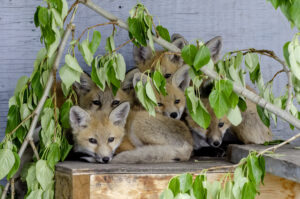
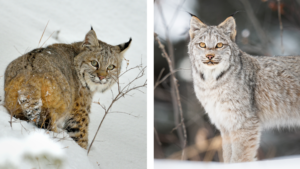


7 thoughts on “Mustelidae In Alberta”
While walking along the banks pf the Red Deer River just outside R.D. I saw a roiling mass moving upriver. It appeared to be a raft of River Otters moving very quickly. At first glance it could have been mistaken for a single, long animal with humps extending above the water. I did manage to get a couple of pictures, but I don’t seem to be able to post them here.
Hi James, that sounds amazing! You’re not able to post pictures in the comments here, but if you want you’re welcome to e-mail them to us at [email protected]
I have something in my basement that the cats can’t seem to catch, but are very interested in. We attempted to catch it using bowls and lifting whatever furniture the cats had pinned it under, but it was too elusive for that. It was about 4 inches long, not much for a tail (didn’t see one at all), white belly, dark on top like black rather than brown, and was shaped long and thin. When it ran it’s body seemed to articulate around and over things. Any idea what this is and why it’s in my house? And more importantly, how do I catch it? We’re pretty sure it’s not a mouse and there are mouse traps out baited with peanut butter but they aren’t working. Also mice don’t usually last long against the cats, they are proven somewhat competent if not overly ambitious mousers.
Ok, we’ve caught the critter. It is definitely a very young short tailed weasel. Now what do I do with it? It seems a little small to be cast outside on November 26th. For now we have it in an empty aquarium with some water and cat food. It went straight for the water and really seemed to enjoy that. I think the cats had it pinned for days, so it was probably quite thirsty.
So the animal is about 6 inches long, white belly, brown fur on top, short black tail, and cute as can be. Very long and thin shaped.
How we caught it: The cats had it pinned under a storage bench, so we built a fence around the bench out of cardboard, put the cats in a room, and then lifted the bench out. We then put a large tupperware over the animal. Once so contained we slid the lid under the animal, and deposited in the aquarium.
Today is Sunday so hopefully you can respond tomorrow with instructions. Is there somewhere to take it or should we just let it outside? We could use some weasels in the area the mice and pocket gophers are out of control, but I’m afraid it is too young to fend for itself in the winter.
Thank you for reaching out to us! As long as there are no visible injuries, you should be ok to release this weasel back to the wild, as it is either an adult least weasel (which are about the size you mentioned) or a short-tailed weasel born this year. In either situation, this animal has all the skills necessary to survive in the wild. If you have any further questions you can reach out to us on our wildlife hotline at: 403-946-2361.
This morning I spotted a white narrow bodied animal with a long black tipped tail. Its colouration was so effective that I thought at first it was a small bird flitting in and out of the bushes in the field behind our house in Lakewood, Strathmore. It was a bit longer than expected for a weasel. It disappeared as I watched out of my window. It reappeared when I went out in the deck and whistled at it. There was a magic moment when it stopped for a moment looking directly at me. Then it disappeared as quickly as it had appeared. Later, two of my neighbours said they had seen it too. They thought that another neighbour was feeding it.
It sounds like you encountered a long-tailed weasel! It’s always a lucky encounter, especially in winter when their white camouflage is so effective.